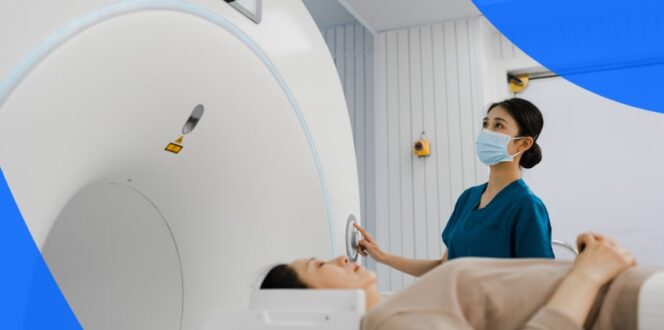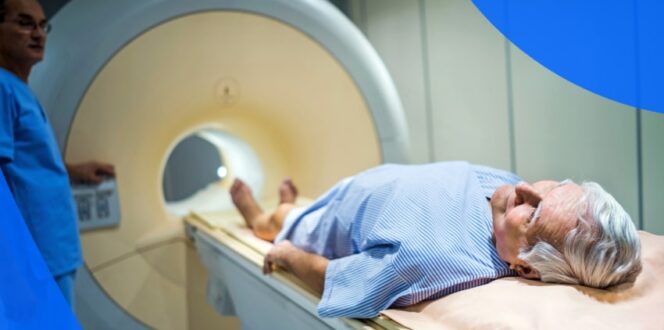Urgent Care vs. ER: What’s the Difference?

You need fast medical attention, but is it an emergency? Or can urgent care provide you with the treatment you need?
Walk into any hospital right now and you’re likely to find an overflowing and under-staffed emergency department. Chances are, a large number of those ER patients don’t require emergency care, but rather could benefit from urgent care. In fact, it’s estimated that between 14% and 27% of all ER visits could be treated at retail clinics or urgent care centers.
This problem stems from more than just confusion over levels of care needed – it’s systemic. Many people are without a primary care physician – 28% and 17% of U.S. men and women, respectively, and about 17% of men and 12% of women in Canada. When those patients develop a health issue, their options are limited, so they seek care at walk-in clinics or end up in the ER.
Post COVID-19, the hospital struggles have been a hot topic of discussion, with ER departments across Canada feeling the heat from staff burnout and shortages. In the province of Ontario alone, 16 ERs have had to temporarily close throughout the summer. Given these limitations, Urgent Care centers have become more essential than ever. But if you’re not experiencing a cardiac event or trauma injury, it can be hard to determine what constitutes emergency versus urgent care. Here are some helpful tips to keep in mind for the next time you need immediate medical attention:
Urgent Care
Urgent care clinics offer a middle ground between the ER and primary care providers. Medical issues that aren’t necessarily emergencies but still require prompt attention would fall under the purview of urgent care. Conditions such as:
- High fevers (Below 103)
- Mild to moderate difficulty breathing, including mild asthma attacks
- Cuts that may require stitches
- Vomiting or persistent diarrhea
- Abdominal pain
- Dehydration
- Strains and sprains
- Urinary tract infections
- Severe sore throats and coughs
If you are looking for more information on what’s treated by urgent care, you can refer to resources like Scripps Health, Ontario Ministry of Health, and The American Academy of Urgent Care Medicine (AAUCM). If you’re unsure whether to go to urgent care or an ER, you can call telehealth or consult with virtual medical professionals if available.
What are the typical tools found at an urgent care clinic?
Urgent care centers must adhere to operational standards set by the Urgent Care Association and the AAUCM. Accord to the AAUCM, urgent care facilities should have the following tools:
- X-ray machines to diagnose issues with the chest, head, body and extremities
- Hematology equipment to take blood samples and assess white and red blood cell counts and platelets
- ECG/EKG to diagnose heart conditions and other cardiac-related ailments
- Spirometer to measure lung capacity
- Hyfrecator to remove skin lesions
- Cryogenics to freeze off dermatological conditions, such as warts
- Microscope to examine serum, tools, urine and sputum
- Centrifuge to produce lab samples for study
- Audiometer to test for hearing loss
- IVs to administer medications
Urgent care centers do not have operating rooms and doctors can’t perform surgery. They don’t have more sophisticated imaging tools like MRI machines or CT scanners. You won’t find on-site pharmacies at urgent care clinics, but doctors can write prescriptions for patients to fill at an off-site pharmacy.
Emergency Room
The ER treats life- and limb- threatening conditions. It’s open 24/7 with physicians, nurses, physician assistants and access to the hospital’s network of specialists and surgeons. But what’s considered a medical emergency? These are some common conditions that would land you in the ER:
- Chest pain or pressure
- Compound fracture (bone that protrudes through the skin)
- Head injuries
- Pneumonia
- Seizures
- Severe abdominal pain
- Shortness of breath
- Sudden, severe headache, or paralysis or weakness
- Uncontrolled bleeding
Not all emergency rooms are the same. Some hospitals have trauma centers – designated facilities staffed with health professionals specially trained to triage and treat life-threatening injuries. There are even different types of trauma centers, classified by level numbers:
Level I Trauma Centers
These are regional hospitals with tertiary care facilities central to the trauma system. A Level I Trauma Center is capable of providing total care for every aspect of injury – from prevention through rehabilitation with immediate, 24-hour access to surgeons and medical specialists.
Level II Trauma Centers
Level II Trauma Centers can initiate definitive care for all injured patients and provide 24-hour coverage by general surgeons, and most major medical specialties. For tertiary care, like heart surgery, hemodialysis and microvascular surgery, patients are referred to a Level I Trauma Center.
Level III Trauma Center
These health centers offer prompt assessment, resuscitation, surgery, intensive care and stabilization for injuries and emergency operations and have 24-hour coverage by emergency medicine physicians and general surgeons. If a patient requires more comprehensive care, they’re referred to Level I and Level II Trauma Centers.
Level IV Trauma Centers
A Level IV Trauma Center is a basic emergency department that provides advanced trauma life support (ATLS) for patients referred to higher level trauma centers, as well as evaluation, stabilization, and diagnostics. They have 24-hour laboratory access and a trauma nurse(s) and physicians on the premises.
Level V Trauma Centers
Level V Trauma Centers are basic emergency departments with ATLS protocols. They provide evaluation, stabilization and diagnostic services for patients prior to transfer to higher levels of care. They’re staffed with a trauma nurse(s) and physicians and implement after-hours protocols
if the facility is not open 24-hours.
Showing up Prepared
Whichever health facility you choose, the doctor will want a medical history. That means medications, past injuries and lab results could be required in order to properly triage and diagnose. But when medical imaging isn’t easily accessible, it creates more work for providers and can slow down your care. You’re more likely to need repeat imaging or scramble to get your records sent from the original provider.
Having all your imaging readily accessible in one place keeps you prepared for the unexpected, it’s why PocketHealth gives patients the freedom to access, store and share their imaging from anywhere at any time. Since it’s a no-network platform, it allows you to send your imaging to any healthcare provider – even when you’re traveling or require care from a trauma center many miles away. No one plans to have a medical emergency, but it’s possible to plan how you’ll handle it.
___
Be ready and prepared the next time you need urgent care by having 24/7 access to your medical images, records and reports here.
Published: October 19, 2022
Trusted by more than 800+ hospitals and clinics.



















